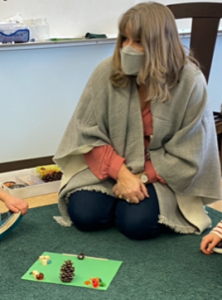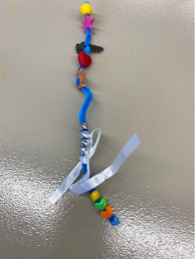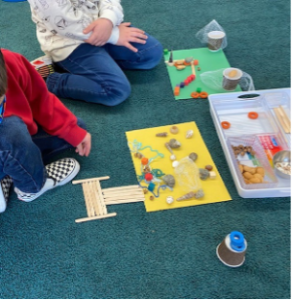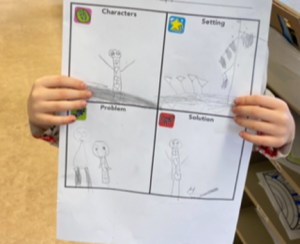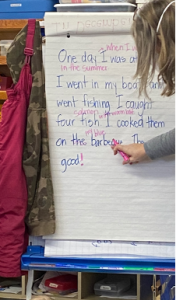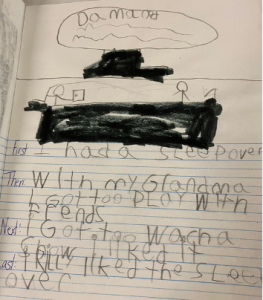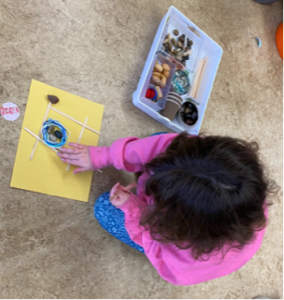I. General Information
School Name: Arden Elementary
School District: SD#71 Comox Valley
Inquiry Team Members: Katie.arsenault@sd71.bc.ca, jacquie.anderson@sd71.bc.ca, krista.manson@sd71.bc.ca,
Nicholas.Glomb@sd71.bc.ca (student teacher)
Inquiry Team Contact Email: Katie.arsenault@sd71.bc.ca
II. Inquiry Project Information
Type of Inquiry: NOIIE
Grade Levels Addressed Through Inquiry: Primary (K-3)
Curricular Areas Addressed: Language Arts – Oral Language, Language Arts – Writing
Focus Addressed: Community-based learning, Core competencies (for example, critical thinking, communication, problem solving), Differentiated instruction, Experiential learning, Flexible learning, Inclusion and inclusive instructional strategies, Inquiry-based learning, Self-regulation, Social and emotional learning
In one sentence, what was your focus for the year? To connect students socially and build community, while developing literacy skills through story workshop and writers workshop.
III. Spirals of Inquiry Details
Scanning: We wondered what was going on for our learners? Through observation at story reading time, classroom discussions and book making sessions, students have challenges encouraging one another, actively listening to others share determining parts of a story, and perspective taking. Students were hesitant to share ideas and more hesitant to write.
Focus: We noticed that we needed to build the scaffold for learning with community building, connecting socially, oral language, and perspective taking. We wondered if students we currently work with are socially impacted by Covid-19. Would providing a rich oral language environment and opportunity to socially interact through play and story workshop improve students’ social interactions as well as literacy skills in oracy, reading and writing?
Hunch: Our hunch was that students were limited in socially interacting with others in school and outside of home, that active communication needed to be explicitly modeled for our learners. We wondered if providing an environment created for children to play, build stories together, and communicate with one another would improve relationships, confidence and literacy skills
both orally and with written work. Students were exposed to technology for long periods of time and hesitant to interact in person with others. We thought students would benefit greatly from increased focus and social interactions. Students who currently felt disengaged would find connection through playful learning, while also building literacy and communication skills.
New Professional Learning: We used Story Workshop and the Story Grammar Marker program. Neither of these programs I had used before. We also explored creating stories with the use of loose parts. I enrolled in district professional development sessions about Story Workshop, that took place over a longer period of time. Our Speech and Language pathologist was involved and introduced Story Grammar Marker to our class. Our Early Learning teacher itinerant supported story workshop through 6 sessions of in-class support. It was an opportunity to try something new with support and enthusiasm for both the students and our team.
Taking Action: We decided to start in November. First, as a team, we researched what kind of loose parts were suggested to use. We then created 7 trays to encourage small groups to work together and support one another. We needed to explicitly teach how to manage and take care of our loose parts, and what to do with them. We had our early learning itinerant come visit and model what story workshop with loose parts looked like. The kids were very engaged in listening to the story that was introduced. It was an oral story about a bird in a tree with her nest, and her dogs reaction was represented with loose parts. The kids listened to the story intently and then were encouraged to think of story that they might like to create. I noticed that many came up with their own stories; some students with more delayed language development copied the story, but created a story using different loose parts. Students were able to use a similar story and make it their own.
Each week in place of our usual Response to Instruction/Intervention instruction time, we set aside a non-negotiable time to work on story workshop and build community within our classroom. For the first two weeks we continued to model a story and then have students create a story on their own using loose parts.
In the third week, we introduced the Story Grammar Marker program so that parts of the story could be developed more thoroughly in their story workshop creations. Along with the program, there is a visual braid that breaks a story into parts using visual pieces as visual reminders. Kids were working together in groups of 4 at each loose parts tray. Students would create a story and then share their story with other tray partners. Students referred to the visual while creating their stories.
In week four, we reviewed what are all parts of the story as reviewed by Story Grammar Marker. This week we gave each student a mini braid to check if their partner had all the components of a story. The children were encouraged to work with a partner to tell their story to. Each child would take turns creating and then telling their story. The mini braid was used as a visual checker, and each child loved having the opportunity to check that each story part was covered.
It was at this point where students were starting to confidently share their stories with others. We invited other adults to listen to stories of children. We then had our Indigenous school elder join our group and listen to the stories of the children. Momentum of excitement was growing. One student asked if we could invite the principal to listen to stories too. We asked big buddies to listen to stories, as well as older students in upper elementary, too. They were excited to share their stories with other students and also with adults.
In week five, we worked on creating and telling our stories, but this time we had an 11×17 sheet of paper divided into four parts, to offer to those who wanted to draw their story down. Most students chose to draw the story they created. We took pictures of each story sheet, and throughout the following week we had students who were comfortable sharing their story with the class. A space was created to take risks, make mistakes, and try again.
Our session with our early learning itinerant was only for six weeks, but we had the skills and the excitement to continue. Every Friday we had a 1 hour and 15 minute block set aside for story workshop. The students requested that we offer loose parts as part of our discovery centres. I would often see students choose to work on story workshop, and then story writing, during centre time. As the year progressed we brought in our knowledge of letters and sounds and began to develop written stories. I would give students a choice – they could create their story and then represent in a variety of ways. The students started creating books. We would place them in duotangs and kids would enjoy the pictures and stories created. We used our Heggerty understanding to help with word development.
Checking: At first we started our session with about 45 mins. We gradually increased our time for story workshop creation to 1:15. I was surprised they could attend to a task and be cooperative for such a stretch of time. All the students were engaged in the process. I noticed with two particular students that story workshop was so impactful for. One student showed incredible artistic talent; his creativity evolved and was made obvious when they had loose parts to work with. They discovered their love of art from story workshop loose parts play. Another student who has regulation challenges was able to attend to a task for an extended period of time. They shared orally, using loose parts, on paper with a graphic organizer, or using book making. This process of sharing provided more people who took interest in them. When asked at the end of the year, in our end of the year interview, students felt connected not only to myself but to a variety of adults and kids within our school community. They would often list two to four people in our school who cared about them. Students were able to explain to others what we were learning and why. Students were able to provide constructive feedback about story writing and were often thinking what will be my next step (or story).
Reflections/Advice: I was impressed at the learning that developed! The students created relationships, used playful learning, and improved their communication and literacy skills. I think the freedom to choose what loose parts, how to create, and having a visual reminder about parts of a story made a huge difference for our learners. Having structure within a flexible learning environment allowed for success with all abilities in my classroom. All seemed engaged and excited to be creative. I am excited to implement this with my next class and see where their learning takes us.

